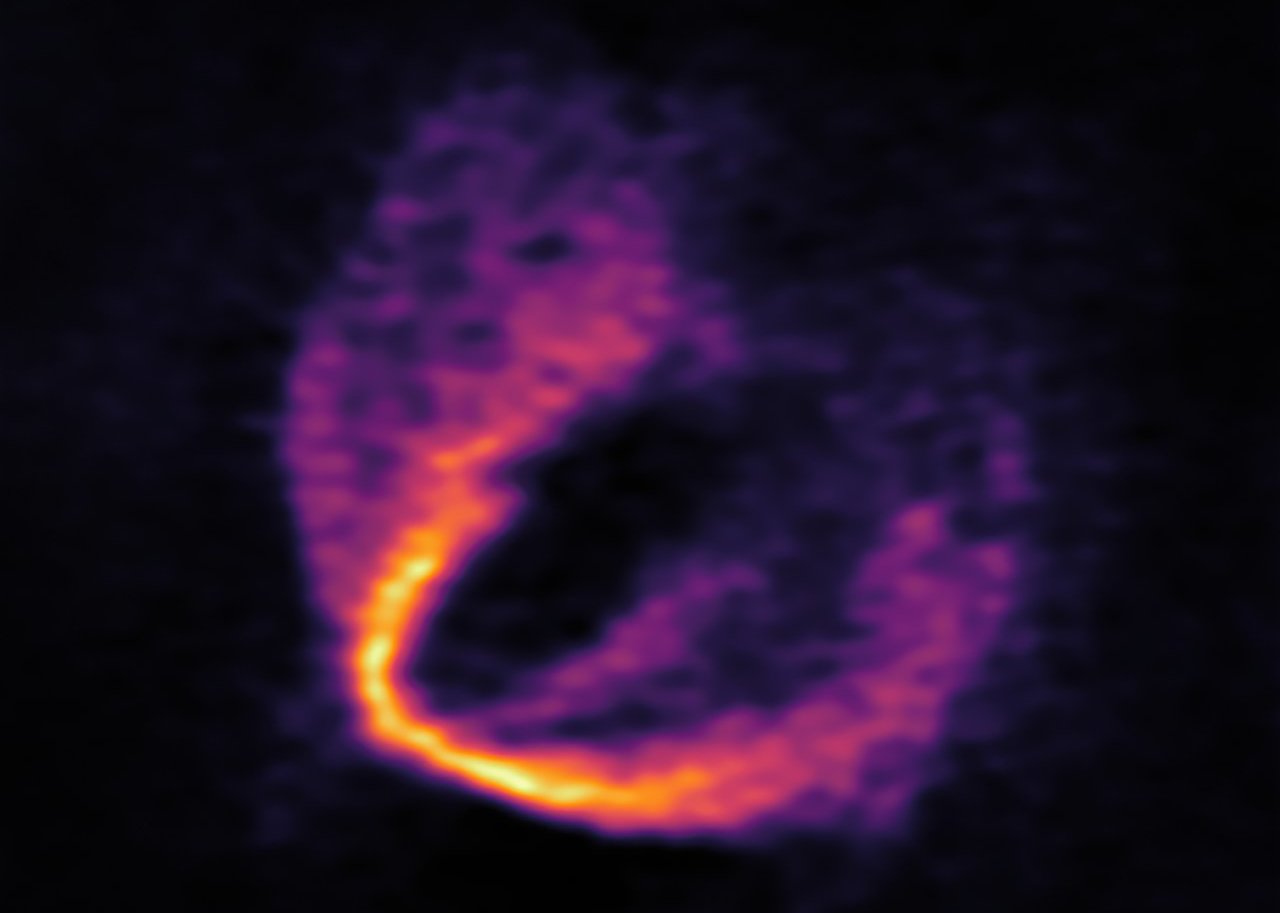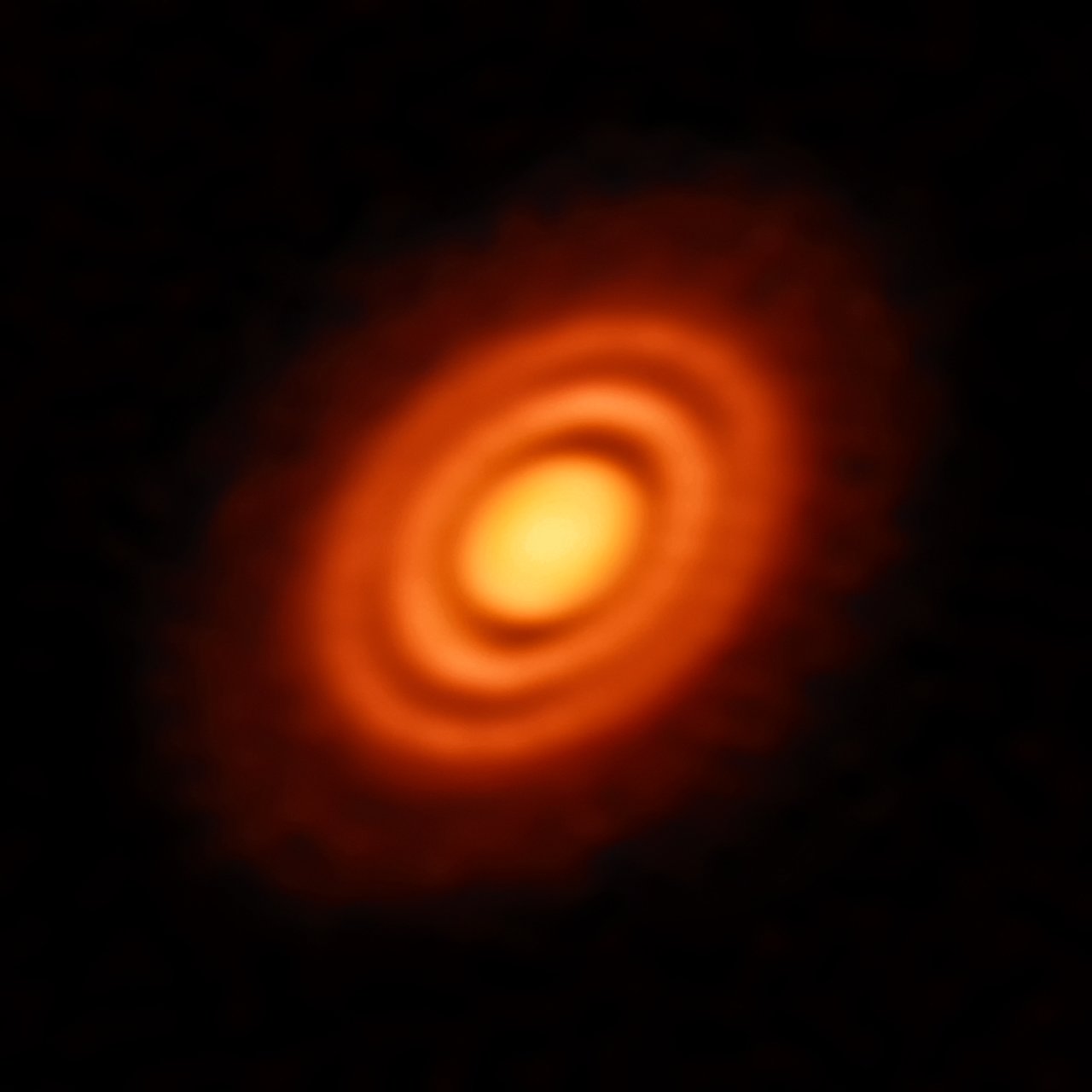Since the 1990s, scientists have detected thousands of exoplanets orbiting distant stars, but the discovery of baby protoplanets embedded within stellar expanses of gas and dust has proven to be a challenge. An international team of astronomers has used a new technique to finally discover not one, but three infant planets around a newborn star – an incredible finding that’s affirming long-held assumptions about planet formation.
Artist’s interpretation of the three protoplanets. Illustration: NRAO/AUI/NSF; S. Dagnello
Normally, exoplanets are detected when they move in front of their host star, resulting in a brief dimming effect, or when their gravity causes a host star to jiggle ever so slightly. But these techniques don’t lend themselves very well to the study of protoplanetary disks – murky expanses filled with rocks, dust and gas.
This is a problem because scientists would very much like to detect protoplanets; the going theory is that planets form within these disks, but astronomers have never actually seen this process in action, nor have they ever detected an infant planet within these dusty incubators.
But that’s now changed, thanks to two new papers published today in Astrophysical Journal Letters.
Using the Atacama Large Millimetre/submillimeter Array (ALMA) in Chile, two teams of astronomers have detected three infant planets around HD 163296, a young star located about 330 light-years from Earth. This star is twice the size of our own Sun, but at four million years old, it’s a mere one-thousandth the Sun’s age.
To detect the new planets, the astronomers used a new technique that detects anomalous patterns of flowing gas within planet-forming disks.
The team, led by Richard Teague, an astronomer at the University of Michigan, found a pair of Jupiter-massed protoplanets located 12 billion km and 21 billion km from the host star – that’s 80 and 140 times the distance from the Earth to the Sun (AU), respectively.
Independently, astronomer Christopher Pinte and his team from Monash University in Clayton, Australia, found a planet a bit further out, around 39 billion km from the host star, or 260 AU. All three planets were firmly embedded within HD 163296’s protoplanetary disk.

ALMA image showing a “kink” in the wavelength of flowing gas within the protoplanetary disk in orbit around infant star HD 163296. Image: ESO, ALMA ESO/NAOJ/NRAO; Pinte et al.
ALMA has been used to study protoplanetary disks before, but this time around the telescope was used to take a much closer look, specifically at the way carbon monoxide (CO) gas flows within this planet-forming region.
Carbon monoxide molecules give off a distinctive millimetre-wavelength light signature, which ALMA is able to detect. Astronomers use the Doppler shift to see how this gas moves within the disk. All things being equal – at least from a gravitational perspective – the gas should flow in a steady, predictable pattern.
But that isn’t what the astronomers saw. At three specific regions within the protoplanetary disk, the gas makes dramatic movements in the form of shifting carbon monoxide wavelengths. These movements, the astronomers argue, are being caused by massive objects, which they interpret to be the three protoplanets. The effect can be compared to the way water eddies form in a river around large rocks.

Previous studies (also using ALMA) highlighted the presence of large gaps within protoplanetary disks. These gaps, it was theorised, were caused by forming planets.
That may very well be the case, but the evidence was circumstantial at best, and the data used in these studies couldn’t be used to estimate the size of the suspected planets. The new technique can do exactly that, while providing a superior way of peering inside these planet-forming disks to see what’s actually going on inside.
It’s an exciting result that showcases ALMA’s ability to sniff out baby planets. The success of this new technique also means other protoplanetary disks should be studied in a similar way. And indeed, both teams are planning to do exactly that.
[Astrophysical Journal Letters, Astrophysical Journal Letters]
